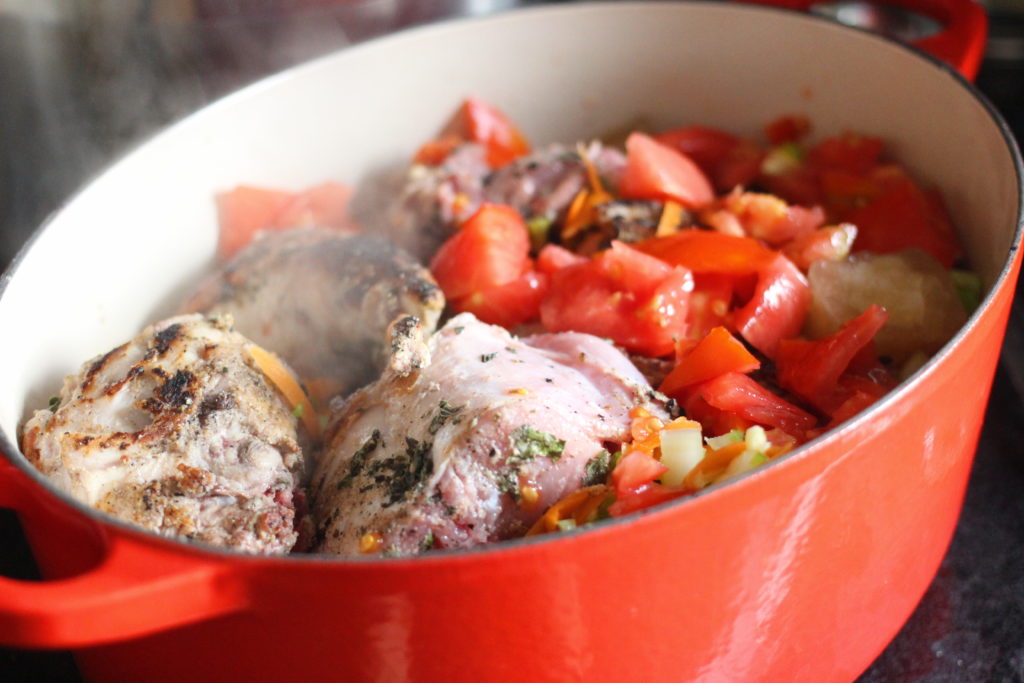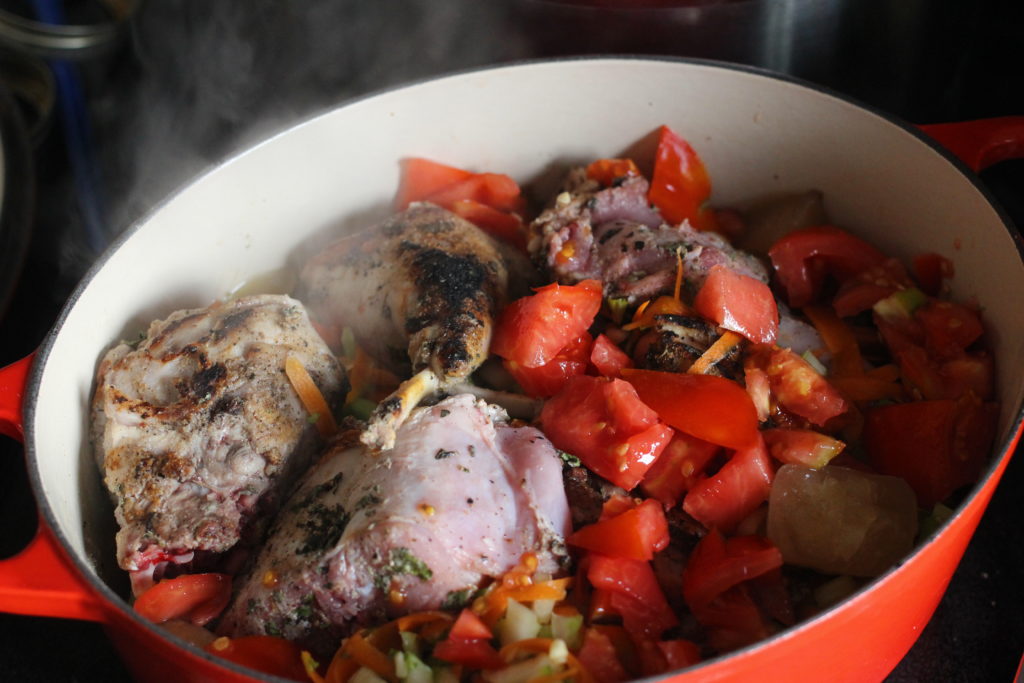
You’re allowed to be scared if you’ve never cooked rabbit before. But you shouldn’t. It’s a lean meat with a thin skin and I can get it whole at Atwater Market at one of my favourite butcher shops, Boucherie de Tours.
But there are a few downsides:
1. There are a ton of little bones, which can be annoying to pick out.
2. It can be hard to source, both in terms of price and whether the animals are ethically raised. Lawrence restaurant chef Mark Cohen told me that he couldn’t find a local rabbit farmer he wanted to work with when I interviewed him several years ago in Montreal)
3. It’s more expensive than chicken or turkey and is on par with Cornish hens. A whole rabbit is about $30 at the Atwater Market
But it’s also reddish meat, and doesn’t really taste like turkey. It’s closer to pork loin, but with these smaller, crunchy bits, so if you love roast chicken but want a thinner, still crunchy skin, or just want to try something new, this is a great option. And it’s perfect for slow-cooking, either in a casserole dish or oven-safe pot with a lid or aluminium foil to cover or in a dutch oven like a Le Creuset. Basically, I take any excuse I can find to use mine after buying it second-hand last year. 
If you want to appreciate the meat for the first time, I recommend keeping your recipe simple. So this one is just seared pieces (my butcher cut the animal up into smaller, more braise-able pieces (whole clean rabbits don’t fit in my pot!) with a little white wine, diced celery and carrots, oregano and chopped tomatoes.
And it was delicious. I seared the meat in oil after coating it in gluten free flour, but you don’t have to do the breading. It didn’t thicken the sauce much in the end, as I intended. If you want a thicker sauce, you can strain the rabbit juices and boil them until thicker, then add salt and pepper to taste (or boil them with some chicken stock, salt and pepper and a little cornstarch for a more British/North American style gravy).
Serve the rabbit with polenta or rice, to soak up the delicious sauce. Potatoes won’t cut it unless they’re very soft and mashed with stock, butter or oil. You can also make this recipe in a slow cooker by transferring everything to the cooker instead of the oven in step 4 (slow-cook on high for 4 hours). But you won’t end up with crispy, browned skin, which is half the fun.
Braised Rabbit Cacciatore
Serves 4-6
2 tbsp oil
2 tbsp flour (I used gluten free)
2 tsp salt
1/2 tsp black pepper
1 whole rabbit, cut into pieces (you can ask the butcher to remove some of the bones if you want, but those add flavour)
1/2 cup diced celery
1/2 cup diced carrots
1 cup chopped mushrooms, optional (oyster mushrooms for FODMAP)
2 cloves garlic, optional (not FODMAP)
1 cup white wine
1/4 cup chicken broth
3 tbsp fresh oregano leaves, or 1 tbsp dried oregano
3 plum tomatoes, chopped
1. Preheat the oven to 300˚F. Heat the oil in a dutch oven or large pot over medium-high heat. Combine the flour in a large bowl with the salt and pepper. Coat the rabbit pieces in the flour and sear in the hot oil until browned on all sides. Do this in batches, adding more oil if necessary.
2. Remove the rabbit pieces to a plate and scrape any burned bits of flour from the pot. Add the celery, carrots and mushrooms and stir constantly for 1 minute. Pour in the white wine followed by the chicken broth and stir to combine.
3. When the mixture comes to a boil, add the oregano and tomatoes followed by the meat.
4. Coat the meat in the sauce, add the lid and bake in the preheated oven for 1 hour and 10 minutes. Uncover the pot, stir and cook for another 10 minutes.
Leave a Reply